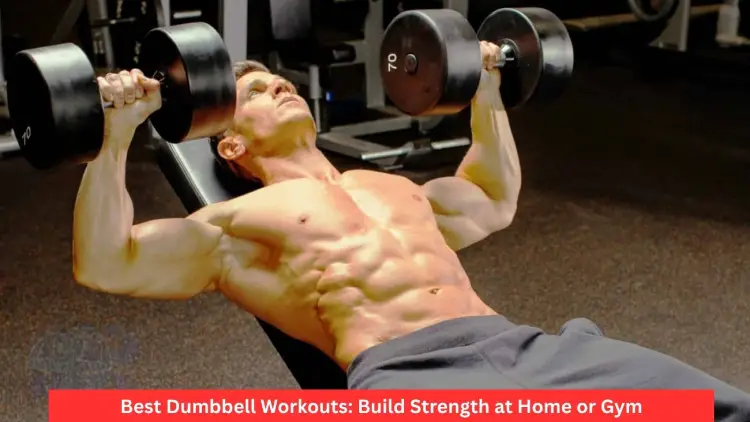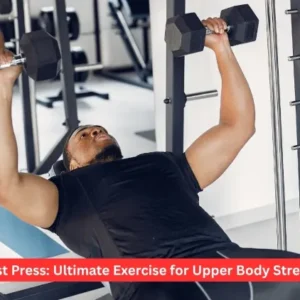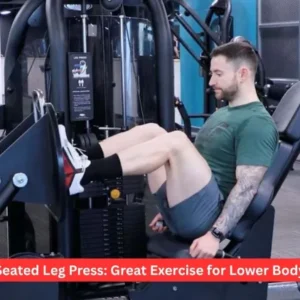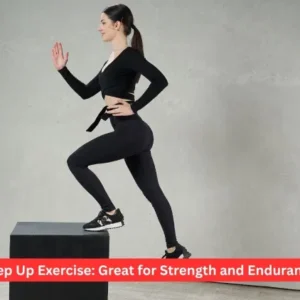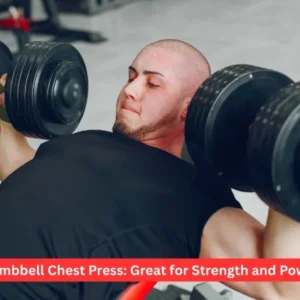Dumbbell workouts are one of the most effective and versatile methods of building up, fat burning, and strengthening muscles. With just two dumbbells, one can train the entire body, fix muscle imbalances, and meet their fitness goals, which may be bulking, toning, or even maintaining lean after 40. The variations of dumbbell exercises are unlimited, including those that incorporate presses, squats, curls, and skull crushers to the chest. Within 6-8 weeks, the proper form, the proper choice of weight, and consistency can show the results.
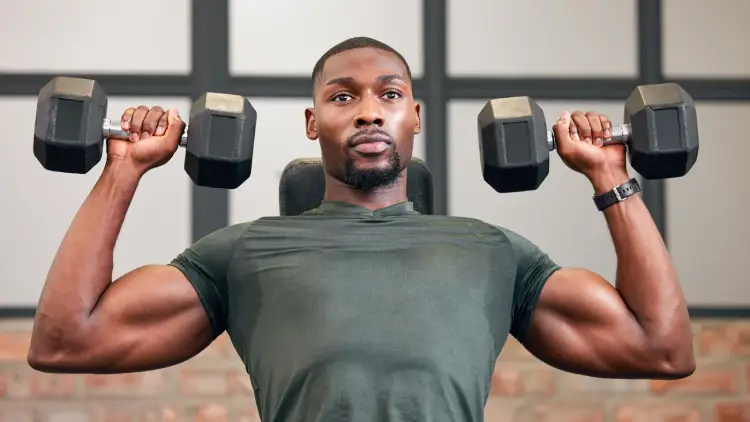
What are the advantages of using Dumbbell Workouts?
Dumbbells have been the test of time in fitness in that they are versatile and efficient. Being a novice with 2 kg of weight or an advanced weight-lifter with 40kg workouts on each hand, dumbbell exercises can be designed to fit your objectives.
- Gain muscle without equipment- You need not use barbells or heavy equipment. Regular use of the dumbbell will only build size and power.
- Right imbalances –As both sides perform separately, your weaker side will even out with your stronger side.
- Support functional strength – Practical tasks such as picking up groceries or moving furniture are similar to dumbbells.
- Portable and flexible- You can keep them at home or go out and about or to the gym.
- Scalable resistance- One can just add more reps, sets, or weight of the dumbbell to keep going.
The major question that many people ask is whether dumbbell exercises can change the body by themselves. Yes, it is, with gradual overload, a healthy diet, and intelligent rest, you can bulk, get toned, and even cut beautiful bodies with only a pair of dumbbells.
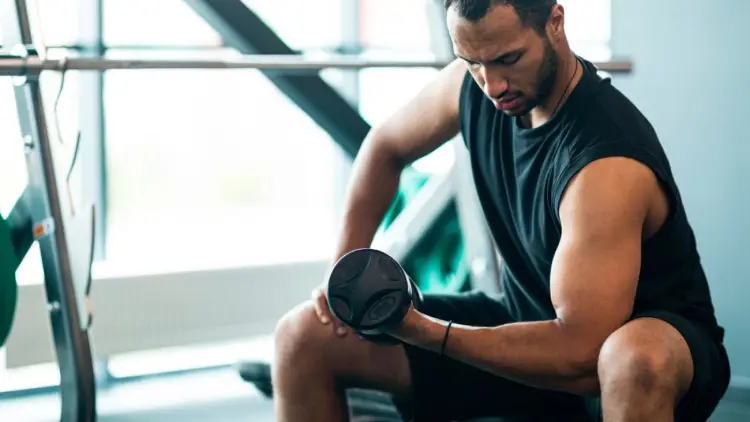
Best Dumbbell Workouts by Muscle Group.
1. Dumbbell Workouts for Chest
Dumbbells training of the chest assists you in getting a more complete, stronger upper body.
- Dumbbell Bench Press- This is one of the best exercises for building overall thickness of the chest. Many trainers also consider it to be the best exercise for the chest.
- Dumbbell Press on Incline-Targets the upper chest, making it more aesthetic and balanced.
- Dumbbell Flys- This emphasizes the stretching and isolating of the fibers in the chest to provide definition.
When working on the chest, you should strive to do 3-5 exercises at once, and alternate between compound exercises such as presses with single movements such as flies. Symptoms of overtraining include pain in the shoulder, persistent soreness, and stagnation.
2. Dumbbell Workouts for Back
The powerful back enhances the pulling strength and posture.
- Dumbbell rows are good for lats, traps, and rhomboids.
- Renegade Rows – This is a back and core hybrid.
- Dumbbell Deadlifts- Smack glutes, hamstrings, and spinal erector.
When you do not feel your back working, check your form–draw again with your elbows, not hands.
3. Shoulder Workouts with Dumbbells
Shoulder building causes your frame to look broader and more sporty.
- Overhead Press- Strengthens all three heads of the deltoid.
- Lateral Raises – This is done to broaden side delts.
- Front Raises – Works on front delts in balance.
Excessively heavy dumbbells tend to swing rather than to be raised so as to control the weight. In case you can not make 8 reps, then your dumbbell is too heavy.
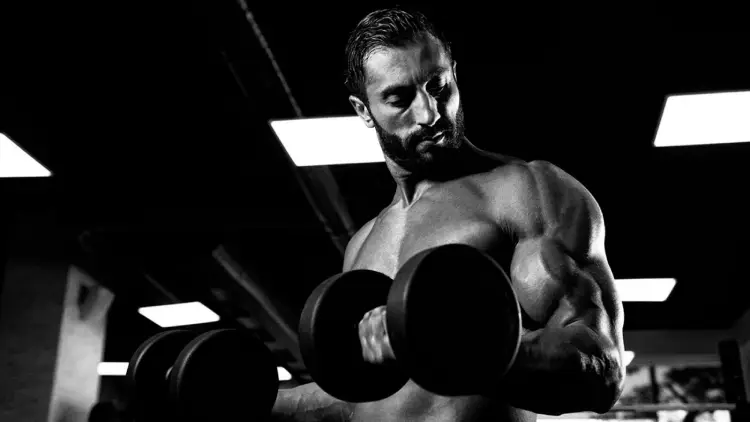
4. Dumbbell Workouts for Arms
Arms are even more rewarding to train since one can see results in a short period of time.
- Bicep Curls- This is the basis of bicep thickness.
- Hammer Curls – Makes the forearms and biceps stronger.
- Tricep Kickbacks- Work and tighten the triceps.
- Skull Crushers (with dumbbells) – Focus on all three heads of the trapezius, taking particular focus on when done in a neutral grip. Skull crushers are another exercise that some lifters use with an EZ bar, whereas dumbbells have a safer position of the wrists.
To change things around, the JM press (the combination of the press and skull crusher) is a great idea to strike the triceps in other ways.
5. Dumbbell Workouts for Legs
Most individuals underestimate the effectiveness of dumbbells in the growth of the lower section of body.
- Goblet Squats- Good for the glutes and quads.
- Lunges – Strengthens quads, hamstrings, and stability.
- Romanian Deadlifts – Good for hamstring stretch and posterior.
Yes, dumbbells make strong legs, and so much more when you use progressive overload and volume.
6. Dumbbell Workouts for Core
Strength in the center improves the performance on all other lifts.
- Russian Twists- Train rotational strength.
- Dumbbell Side Bends- They tighten the waistline by strengthening the obliques.
- Weighted Sit-Ups – Resistance to add endurance to the core.
Even a 1520-minute dumbbell workout consisting of core and compound lifts can prove quite efficient, especially when one is short of time.
Dumbbell Training Tips
- Select the appropriate weight – As a beginner, 125 to 250 grams of dumbbells are enough to tone the arms; however, to really build up, work towards 125 or 250 grams of dumbbells that challenge you with 8-12 repetitions. A 7kg dumbbell is sufficient to help beginners build muscle, provided progression is applied.
- Train smart- Three exercises a day can be sufficient to keep you fit, but to build muscle, a systematic plan of exercises with 5-6 exercises should be implemented.
- Use the 3-3-3 principle – It is common in strength training: three exercises, three sets, three times per week. It is also used in fat-loss programs as strength, cardio, and core 3 minutes, or a 3×3 morning workout to get the metabolism going. The concept is organized coherence.
- Rep counts count –Rep counts count -High counts can create endurance and definition, whereas heavier weight with lower counts (4 to 8) are all about strength and size.
- Duration of workout – an average dumbbell workout will take 3060 minutes. Even during brief sessions (20 minutes), it may be effective provided that the intensity is high.
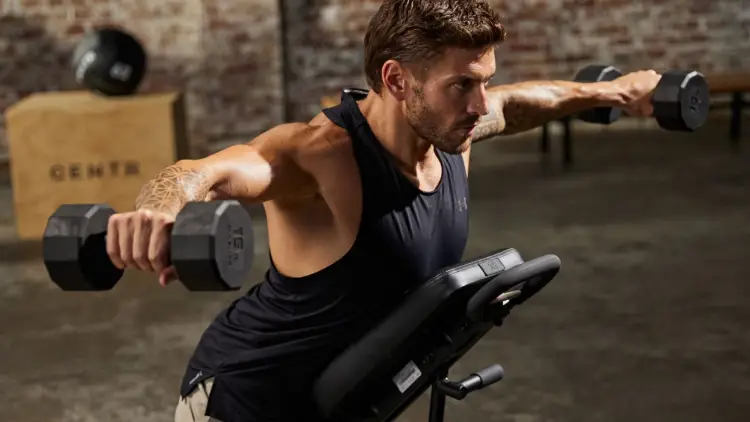
Advancement, Outcomes, and Rejuvenation.
When performed with regular dumbbell exercises, it usually takes 6-8 weeks to see the results. Muscles of the chest can be especially slow to develop, and it can take 10 or 12 weeks of training before they gain any noticeable improvement.
- Bulking stage – Consume heavier dumbbells, compound exercises, and surplus calories.
- Cutting/toning phase – Increased use of light weights, increased repetitions, and controlled rest intervals.
- Over 40 years old – Pay attention to movements that are easy on the joints, middle weight, and rest days. Dumbbell exercises can make you gain some great muscles after 40, so long as you have a healthy diet and recovery.
Constant fatigue, poor performance, pains that do not go away, and even sleep disturbances are some of the signs of overtraining. Exercising excessively without a rest might overstress the heart in extreme instances, so it must be balanced.
Evening vs Morning Dumbbell Workouts.
The most optimal time to train will be based on your lifestyle:
- Exercises in the morning increase energy, metabolism, and regularity. Short sets on a dumbbell can be a good beginning to the day and a 3×3 morning routine.
- Evening exercises can permit more weight lifting as body temperatures and strength are the highest in the day.
- The most important thing is to be able to show up and perform at a particular time of the day, and that is the best.
Sample Dumbbell Full-Body Workout.
Perform 3 rounds, 10–12 reps each:
- Goblet Squat
- Dumbbell Bench Press
- Dumbbell Rows
- Overhead Press
- Bicep Curls
- Skull Crushers
- Russian Twists
This will exercise all the big muscle groups within a time of less than 40 minutes. Even shorter (20-minute) workouts that include only 3-4 movements can be very effective as long as the intensity is high.
Final Thoughts
Dumbbell exercises are still considered to be one of the most stable, universal, and effective methods of strength and bodybuilding. Dumbbells can be used whether you are training to go light and endure or to go heavy and bulk. It does not take a full gym, but just consistency, proper form, and progressive overload.
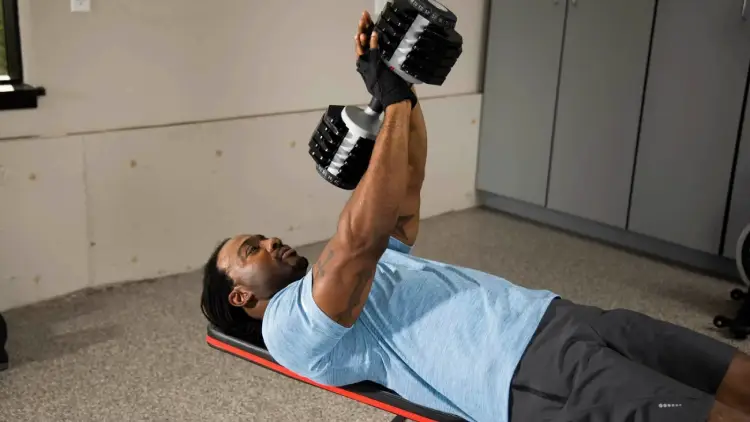
Through intelligent training, feeding your body with the most appropriate foods, and paying attention to recovery cues, you can build muscles that are strong in the arms, wide in the chest, firm in the legs, and strong in the middle core all through the use of dumbbells. Regardless of your age, your training schedule, and the level of experience you have, dumbbell exercises can be your long-term training partner.
Frequently Asked Questions
1. Is it possible to use a dumbbell only to develop muscle?
It is possible to build muscle using dumbbells. With the application of progressive overload (adding more weight, reps, or sets), a structured workout, and a high-protein diet, dumbbell exercises should be sufficient to build size and strength without machines or barbells.
2. What is the length of a dumbbell workout?
An effective dumbbell exercise program should take between 30-60 minutes, however, based on the intensity and objectives. Even in the short sessions of 20 minutes, you can do some exercises that concentrate on compound exercises as long as you are persistent.
3. How heavy should the dumbbells of the beginners be?
Novices need to begin with a weight that will enable between 8 and 12 reps in good form. That can be 2-5kg for some, and others may begin higher. To do it, it is important not to swing or strain. When you are not able to perform at least 8 reps, the dumbbell is too heavy, and when you can perform 20 without difficulty, the dumbbell is too light.
4. What is the best frequency of dumbbell workouts?
Using dumbbells 3-4 times a week is the best training option. This enables you to train every part of your body and gives your body time to rest. The more frequent sessions can be achieved when you change intensity and divide your training into working on various muscle groups.

